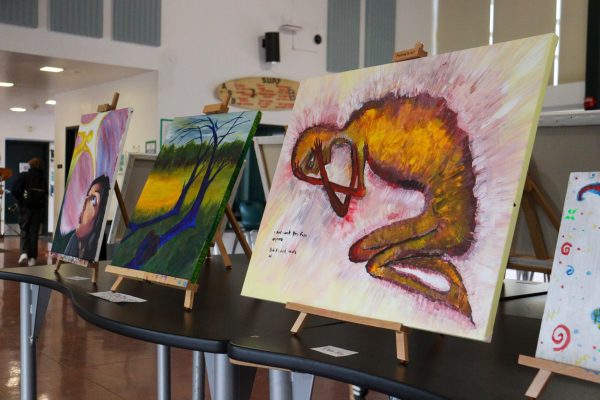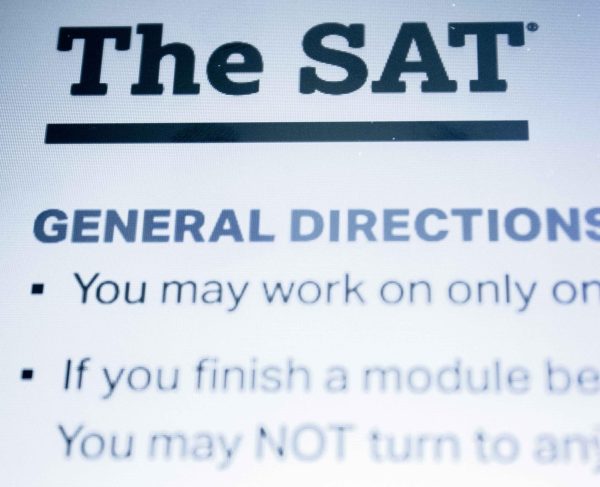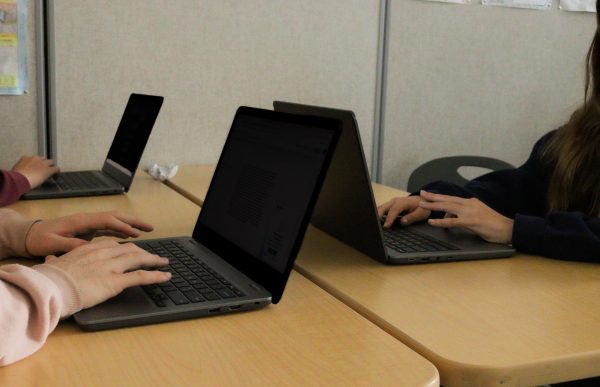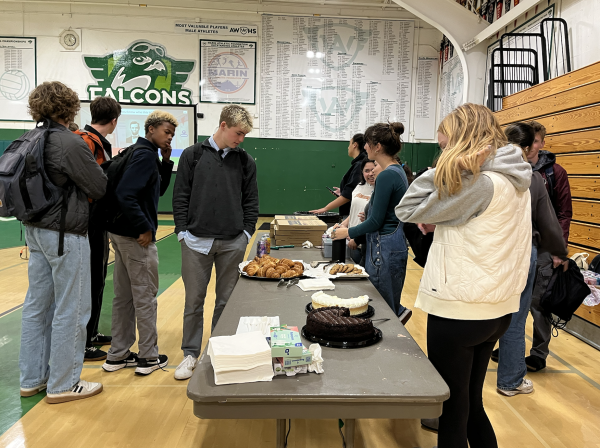Record-breaking pet adoptions overwhelm veterinary clinics
A veterinarian secretary works behind her desk taking calls, located in the Fairfax Veterinary Clinic on 2084 Sir Francis Drake Blvd.
With record pet adoption rates brought on by COVID-19, veterinary clinics struggle to meet increased demands for their services. The influx of pets causes Veterinarians across the Bay to adjust their schedules, while dealing with the lack of staff.
As a result of the COVID-19 lockdown on Mar. 19, 2020, issued by Governor Gavin Newsom (D), the number of pet adoptions in California increased by about 8.77 percent. California residents recognized their newfound free time, creating a total of around 256,739 adoptions across the state, according to a recent study by Honest Paws.
With this increase in pet adoptions, Marin veterinarians noticed an increase in appointments, causing clinics to be understaffed. Kelly Pipkin, an associate veterinarian at Fairfax Veterinary Clinic, works to stabilize the workload of incoming pets for employees of the clinic. Pipkin believes that with limited employees and examination rooms, it is difficult to keep up with the growing number of pets in the clinic.
“The most notable is that the chaos of the last year and a half is just that people were getting pets faster than there were new vets. So it makes it tough to balance the emergency and problem-based visits with the routine visits that already occupy so much of the schedule,” Pipkin said.
We try to accommodate early on in the pandemic but we are still stretched a bit thinner. It was a more chaotic environment because it was a little more rushed so we could get through everything. — Kelly Pipkin
The daily agenda for the Fairfax clinic consists of vaccine visits for newer pets, with emergency appointments often disrupting veterinarians’ schedules. Aiming to compensate for a lack of examination rooms, the Fairfax Veterinary Clinic limited the number of appointments available on a given day, so that they are able to serve clientele who may need emergency services.
Pipkin witnessed the increase of animal adoptions most in the number of pets entering the clinic for vaccinations, neutering, spaying, and other typical procedures last year. Although vets across the Bay Area are still resolving the conflicts of overscheduled vet clinics, the profuse amount of pet appointments is steadying.
“We try to accommodate early on in the pandemic but we are still stretched a bit thinner. It was a more chaotic environment because it was a little more rushed so we could get through everything. So I would say it’s still busier than usual but it has tapered off a little bit,” Pipkin said.
AWHS sophomore Sutter O’Brien and his family adopted a bunny during COVID-19 after being restricted from outside friends and family due to the quarantine.
“I was very bored during COVID-19 and a bunny changed that. I needed something new and exciting to color up my life,” Sutter said. “I adopted a pet because it relieved stress, and gave me something to look forward to and to spend time with.”
The lack of travel opportunities during the pandemic allowed more time for owners to concentrate on their pets, making it ideal for AWHS sophomore Ingrid Wahlstrom and her family to adopt a cat.
“We wanted to get a pet before COVID but we were waitlisted. It made it hard to find a pet because everyone wanted one, but what convinced us to look harder was when COVID-19 happened,” Ingrid said. “Other people adopted pets over COVID because they were lonely, my family decided we needed a pet too.”
As veterinary clinics adapt to meet the demands of increased pet adoptions, vets across Marin attempt to push past the lingering effects of COVID-19 on their businesses.
Your donation will support the student journalists of Archie Williams High School. Your contribution will allow us to purchase equipment and cover our annual website hosting costs. Each donation will receive a magazine subscription for a year (6 copies a year), and become a part of the important work our publication is doing.
$35 -- Subscription to the magazine
$50 -- Silver Sponsorship
$75 -- Gold Sponsorship
$100 -- Platinum Sponsorship

Avery is a sophomore, in her first year of journalism. She enjoys going to Bolinas to surf, getting oreo ice cream from Scoop with friends and cooking...












